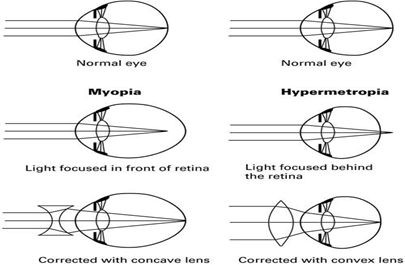Things you should know about optics.


What are the most common types of eye defects
This would cause the person in having blurred vision looking at objects in the distance.

ASTIGMATISM. This condition occurs when the cornea or the lenticular lens is not round but oval in shape. This will split the light rays into 2 focusing point in the eyes.As a results the person will see a distorted objects both far and near.

PRESBYOPIA. This condition occurs when the focusing ability of the eye reduces with age and normally starts at 40 years old. This will cause the person having difficulty looking at near object.
When you blink, a film of tears spreads over the eye. This keeps the eye’s surface smooth and clear. The tear film is important for good vision.
The tear film is made of three layers:
Each layer of the tear film serves a purpose.
The oily layer is the outside of the tear film. It makes the tear surface smooth and keeps tears from drying up too quickly. This layer is made in the eye’s meibomian glands.
The watery layer is the middle of the tear film. It makes up most of what we see as tears. This layer cleans the eye, washing away particles that do not belong in the eye. This layer comes from the lacrimal glands in the eyelids.
The mucus layer is the inner layer of the tear film. This helps spread the watery layer over the eye’s surface, keeping it moist. Without mucus, tears would not stick to the eye. Mucus is made in the conjunctiva. This is the clear tissue covering the white of your eye and inside your eyelids.
Normally, our eyes constantly make tears to stay moist. If our eyes are irritated, or we cry, our eyes make a lot of tears. But, sometimes the eyes don’t make enough tears or something affects one or more layers of the tear film. In those cases, we end up with dry eyes.
